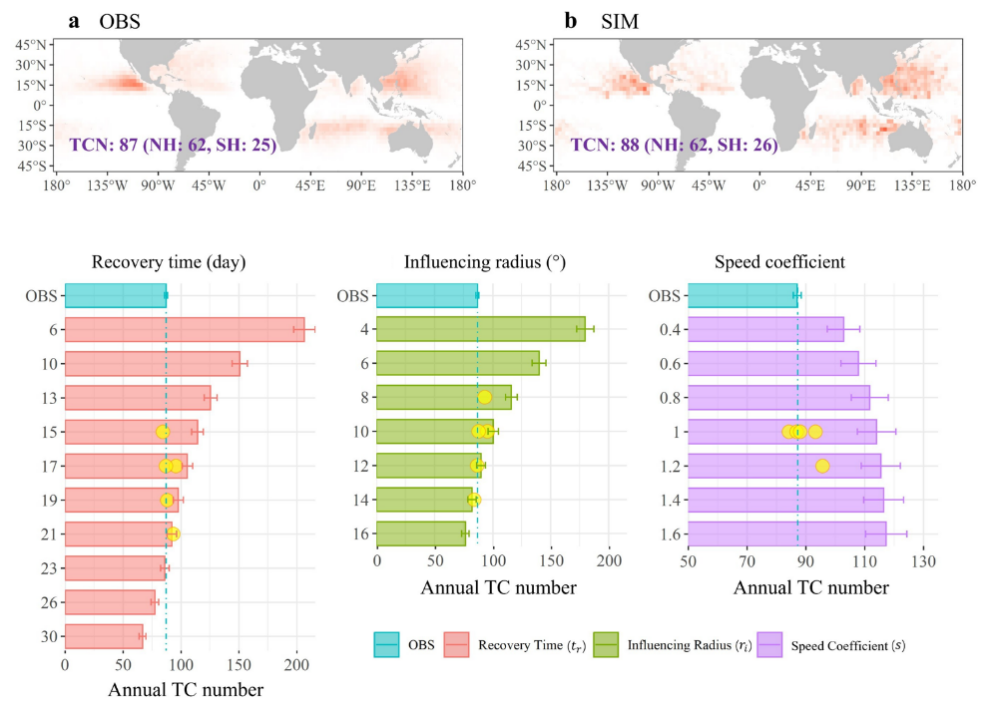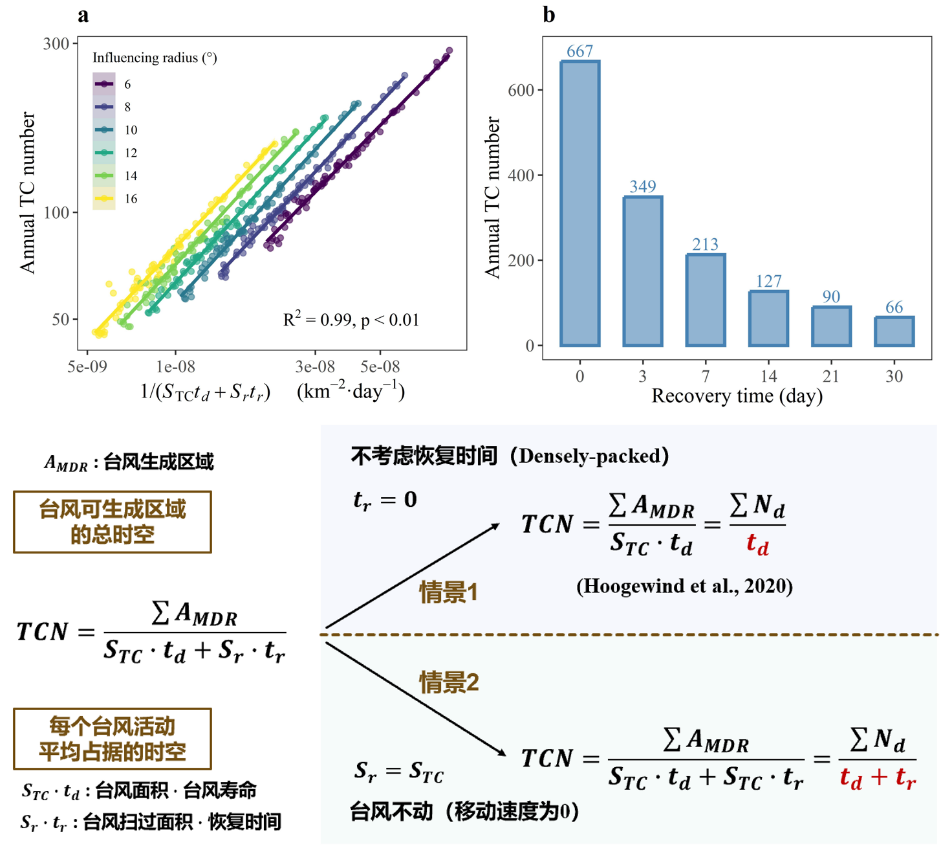The losses caused by tropical cyclones (TCs), one of the most destructive weather systems on Earth, are related to their frequency. Over the last decades, the annual number of global TCs remains fairly stable at a frequency of about 80-90 per year. However, the evolving pattern of this frequency persists as unpredictable, which may potentially jeopardize human productivity, social progress, and economic development in the coming years. In addition, the underlying physics and mechanisms that constrain the annual occurrence frequency of tropical cyclones worldwide have yet to be fully elucidated, posing a pressing scientific question that demands immediate investigation.
Addressing the above scientific problem, Prof. Guan Dabo’s Research Team of Tsinghua DESS, conducts research with a focus on the annual number of global TCs, attempting to explore new knowledge and understanding. This study utilizes observational data to assess TC-environment interactions, such as atmospheric drying, stabilization, and oceanic cooling, which occur after TC passage and, as a feedback mechanism, may inhibit or reduce subsequent TC formation. Focused on the recovery of TC-induced hostile environment, we construct an idealized toy model incorporating the global main development region (MDR), recovery time and influencing radius. As damages on the environment or human society by events like TCs need a period of time to recover, recovery time is introduced to quantify the recovery process of the environment. By constructing an ideal toy model, this research well captures the spatial and temporal characteristics of TC activity and finds the relationship between the annual number of TCs with the model parameters (Fig. 1).

Fig. 1 Histograms of spatiotemporal distribution and annual number of TCs with each parameter in the toy model.
Then the research proposes a new scaling of annual TC number, framed as a spatiotemporal packing problem determined by the total spatiotemporal area available for TC formation and the average area occupied by each TC. With the environmental recovery time deemed as a temporal interval, the average spatiotemporal area of each TC is quantified. The recovery time is included as a new temporal constraint to delineate the spatiotemporal density of TCs. Therefore, the annual TC number is determined by the ratio of the global main development region (MDR) area to the area of a single TC, this scaling is validated by toy model simulations. Specifically, based on TC attributes in the current climate, the scaling yields an estimate of ∼100 TCs per year given a recovery time of 2–3 weeks (Fig. 2). It also implies that a warming climate might lead to fewer TCs due to increased TC size and longer recovery times.

Fig. 2 Global TC frequency formula and simplification in the toy model scenario
The research emphasizes the significant impact TC-environment interaction, especially the process of ocean recovery, on TC frequency and activities. The framing of tropical cyclone frequency into a space-time spatiotemporal packing problem also provides a new perspective for understanding TC frequency and activities. Related research results won the Outstanding Student Poster Presentation award at the 36th American Meteorological Society Conference on Hurricanes and Tropical Meteorology in 2024, and were published in the journal Earth's Future in the form of a paper titled “A toy model for the global annual number of tropical cyclones”. Zhou Yufeng, a doctoral student of Prof. Lin Yanluan's Research Group in the Tsinghua DESS, is the first author of the paper, while Professor Lin Yanluan is the corresponding author. The research was supported by the National Natural Science Foundation of China (42130603).
Paper information:
Zhou, Y., & Lin, Y. (2024). A toy model for the global annual number of tropical cyclones. Earth's Future, 12, e2024EF004839. https://doi.org/10.1029/2024EF004839
Scan the following QR code or click the following link to read the full text.

Full text: https://agupubs.onlinelibrary.wiley.com/doi/10.1029/2024EF004839
Written by Zhou Yufeng
Edited by Wang Jiayin
Reviewed by Lin Yanluan and Zhang Qiang